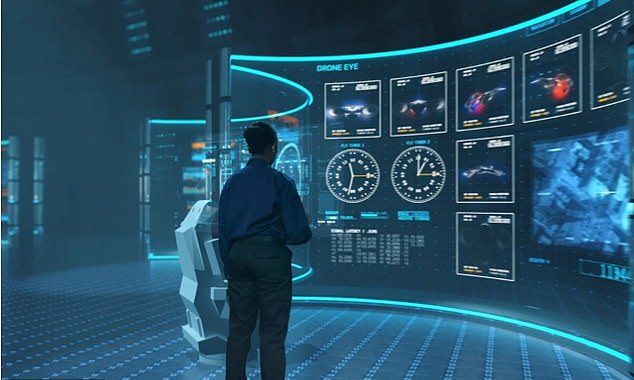The Royal Navy is using AR for a futuristic UI that will promote more efficient ship wide communications.
One of the most important roles on a warship – or any ship for that matter – is the role of the bridge watch officer. Their job is to ensure the safe and smooth navigation of the ship by performing tasks such as comparing compasses, checking sounds through an echo sounder, monitoring all bridge activities, and so much more. It is one of the most crucial roles for the safety of the ship while at sea and when in port.
During a recent media briefing in London, BAE Systems announced that they will be updating a Royal Navy warship with an AR system that will furnish the role of the bridge watch officer with significant data such as radars and sonars, along with other critical and tactical information for faster and more efficient communications between all crew members.
The system will also enhance the AR experience through artificial intelligence.
The role of the bridge watch officer is “quite often overloaded,” said Frank Cotton, BAE’s head of Technology for Navel Combat Systems, in an interview with The Engineer. Using AR to help connect all the pieces together in an easy-to-navigate digital layout has the ability to make operations much more efficient. Cotton adds, “Rather than giving the bridge watch officer a headset with comms on it, let’s give them a set of lightweight augmented reality glasses.”
The AR technology that BAE plans on applying is actually a modified system that the Royal Navy currently uses on the new Striker II pilot’s helmet. These helmets deliver a blended display of real-world surroundings and digital intelligence which pilots can use to determine differences between enemy and friendly forces, delivering a more precise strike zone within matter of seconds as opposed to minutes.
However, bridge watch officers won’t be using the Striker II pilot helmet specifically. Instead, these crewmen will receive AR data through a Microsoft HoloLens that BAE hopes to scale down to something more lightweight and easier to wear during a typical bridge watch officer’s shift.
Here’s how it work: Once you’ve reported for duty as bridge watch officer aboard the Royal warship, you put on the HoloLens to launch a futuristic UI that will eventually look like a scene from a big Hollywood sci-fi blockbuster (according to concept photos provided by BAE). The digital surface delivers information from all aspects of the job that will assist sailors in making decisions without having to continuingly connect with other crew members for clarification.

For example, with a HoloLens headset a bridge watch officer could detect an object in the distance and, through AI, get classification data on that object. If the data doesn’t match what he/she is seeing, they have the ability to either change the data. If they suspect that something is potentially a hazard for the warship, they can then flag the object in the system directly without having to notify others.
It’s using augmented reality as a tool to build a better and more efficient workflow in a military setting.
Technology isn’t perfect, and in this case there are some small hurdles for BAE’s AR approach, such as how glare from the ocean waters can make it difficult to see data displayed through the HoloLens. However, these minor roadblocks aren’t stopping BAE or the Royal Navy from moving forward.

As a matter of fact, other forms of technology outside of AR and AI are actively being explored in the hopes of enhancing military activity within the Royal Navy, such as VR, touch control, gesture control, and voice activation. “Not all of them will be appropriate for the Royal Navy operations room, but some of them will be,” said Cotton.
BAE System’s AR rollout will cost the Royal Navy £20 million ($27 million) as part of a defense contractor investment in advanced combat systems technology. According to a BAE representative, testing will begin in early 2019 on a Type 23 frigate and could be fully integrated into all of the Royal Navy’s ships by the last half of 2019.
Image Credit: BAESystems
The post The Future Of The Royal Navy’s Combat Systems Is AR appeared first on VRScout.
from VRScout https://ift.tt/2KzosoR
via IFTTT
No comments:
Post a Comment